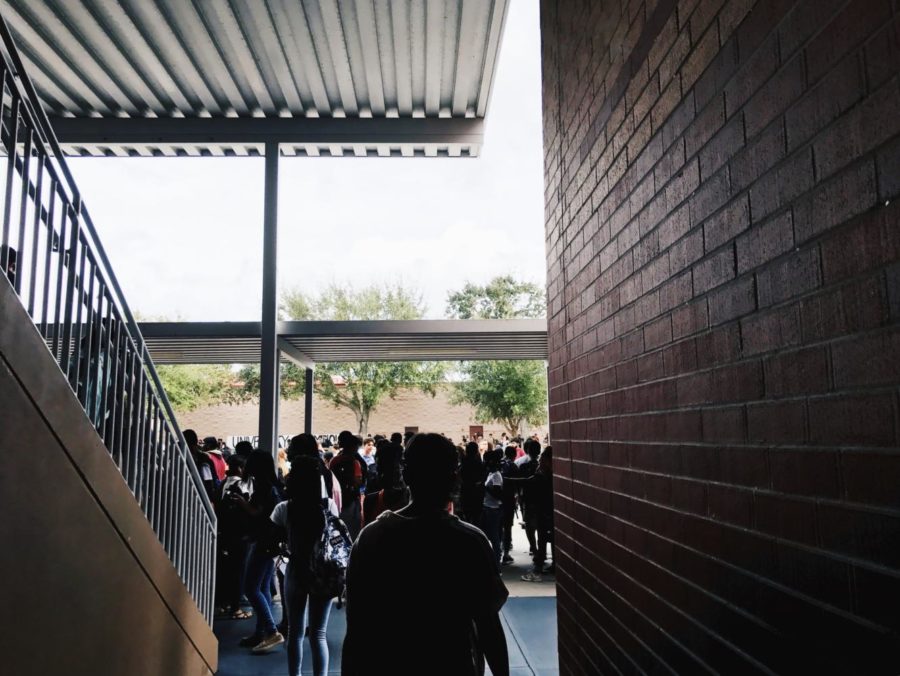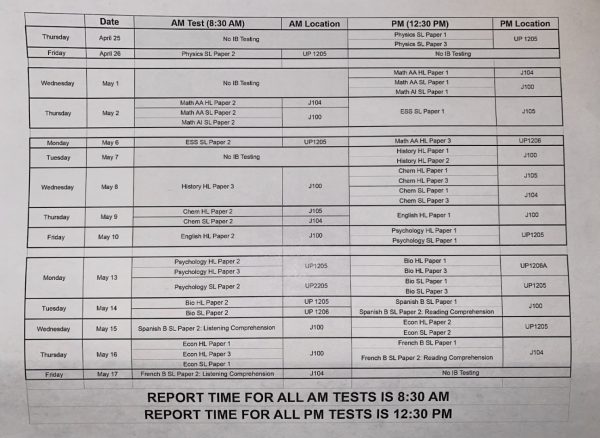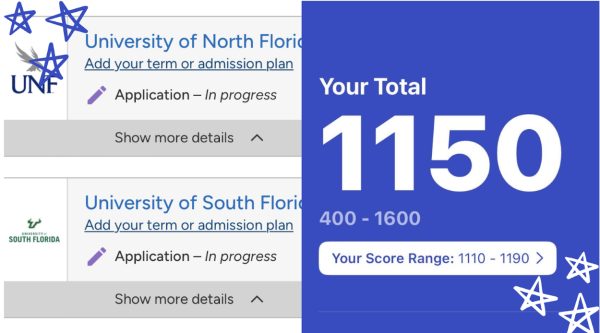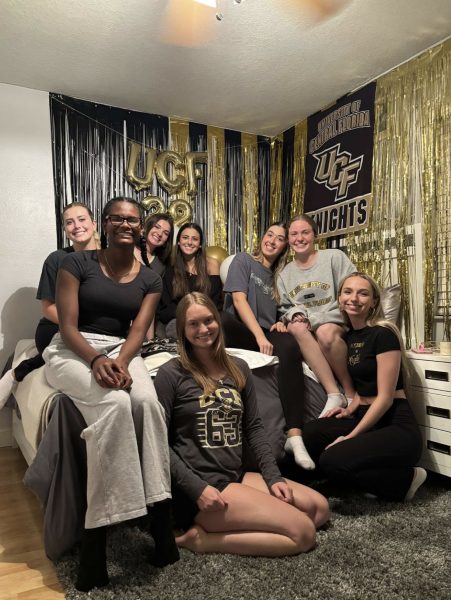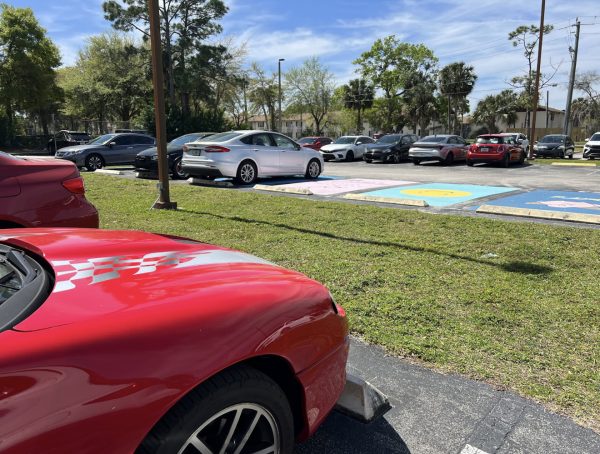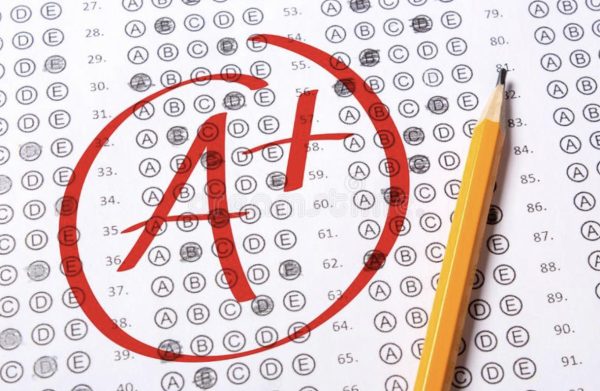LARGER CLASS SIZES: THE LOWDOWN
Students and staff are both impacted by the increase in students on campus this year.
October 17, 2017
As students entered their classrooms on the first day of school, anxiously searching for seat with their friends beyond the extent of the teacher’s gaze, they noticed an interesting phenomenon: there didn’t seem to be nearly enough chairs.
In some classrooms at Seminole High School (SHS), teachers experienced such severe chair shortages that they found themselves borrowing from neighboring classes or having students share desks. Indeed, many have observed that the hallways seem tighter this year, and that classes are more squeezed than ever. As it turns out, the speculated overcrowding on campus is no myth, according to statistics obtained by the Seminole Newspaper.
The Students
The cause of the overcrowding problem appears to be twofold: SHS experienced an uptick in its student body, with 1124 freshmen, 838 sophomores, 753 juniors, and 652 seniors attending the 2017-18 school year. Interestingly, the number of teachers did not increase correspondingly. The result: larger class sizes.
“Last year and the year before, we opened with approximately 3100 students,” said principal Dr. Connie Collins. “This year, we are opening with approximately 3375.”
While it’s difficult to pinpoint exactly why the student body has expanded, there are several factors that are worth considering. For instance, a new policy enacted by Seminole County Public Schools has allowed freshmen to enroll at SHS mid-year, bringing their siblings of any grade along with them. This decision, made by the District and Choices Department, opened enrollment for a group of students who normally would not be allowed to register mid-year.
Furthermore, the Executive Director of Secondary Schools, Mr. Mike Gaudreau, told the Seminole Newspaper that the Department of Education (DOE) uses the Capital Outlay Full Time Equivalent (COFTE) to predict the number of new students entering schools annually; COFTE is based on analysis of previous trends. While the predictions made by the DOE are usually fairly accurate, they tend to underestimate the number of new students because COFTE only takes into consideration the birth rate of local children and not the increase in students from newly-constructed neighborhoods. Therefore, analytics may not have considered the rise in housing developments around the school.
Additionally, Dr. Collins points out that SHS has been working to retain more students than in previous years. One program specifically targeted was the International Baccalaureate (IB) program, known for its significant dropout rates due to the curriculum’s rigor. By providing better support for IB students, administration has worked to keep as many students in the program as possible. Furthermore, the Health Academy program has experienced growth, with 800 students this year compared to last year’s 600. Collins cites the “booming medical industry” as an incentive to expand the Health Academy program.
It is also possible that the loss of 16 portables, recently torn down to prepare for construction, caused an additional 16 classes’ worth of students to join the main campus. This would lead to an increased sense of crowdedness. Interestingly, the State of Florida maintains that our facility can house upwards of 3600 students.
The Teachers
The increase SHS students has had a noticeable flip side: a decrease in the number of teacher allocations at Seminole High School.
“We have approximately six fewer teacher allocations than last year,” said Dr. Collins. “Last year, we had some ‘teachers’ who were not in classrooms, but held other responsibilities. This year, those ‘teachers’ are in classrooms with students.”
Essentially, the number of allocations, or paid teacher positions, that each school will receive is decided annually by the school district. They make this decision using COFTE, state reports of housing demographics, comparative annual student body sizes, and potential fluctuations in magnet student populations. Based on these considerations, Dr. Collins estimates that there are around 5,000 students zoned for SHS.
Despite the loss of six allocations, SHS made a number of new hires for this school year in order to replace vacancies left after the 2016-17 school year. The list of new hires includes four new science teachers, three reading teachers, three math teachers, three English teachers, and two social studies teachers. The school also added two new Health Academy clinicians, a band director, and a guidance counselor.
The Classes
Even with the new hires, however, class sizes have become larger, causing administration to shift schedules and move students in order to make the best of the situation.
“We can’t try to hire teachers after the fact, because teachers are scarce,” said Dr. Collins. “Instead, we have to try to level classes.”
Thus, instead of hiring new teachers, SHS is currently coping with the problem by trying to ensure that class sizes, while large, are at least even. Such leveling became extremely necessary during the first weeks of school, during which there was the aforementioned lack of chairs.
The justification for this leveling comes from state laws. According to laws set forth by the State of Florida, class sizes cannot exceed 25 in the subjects of English, Math, Social Studies, and Science. However, there is a legal loophole: if the school belongs to an A district, it is only required to meet an average maximum class size. As it so happens, Seminole County Public Schools is an A district.
“The old class size rule was hard and fast: at 26 kids, you had to open a new class,” pointed out Dr. Collins. “They don’t do that anymore. For high-performing districts, they have class size average. The district checks our attendance daily, but does not think that anything warrants additional instructors because we haven’t broken the equal class sizes amendment.”
Another important loophole– the class size laws do not apply at all to IB or AP classes. This means that IB or AP class sizes can grow infinitely, with no legal measures in place. As a school with a substantial IB program and 65 percent of students enrolled in AP classes (as per last year’s statistics), this has massive implications.
“If we do an AP class with only 9 or 12 kids in that class,” explained Dr. Collins, “although it’s not [affected by] the class size rule, we only have so many teachers, so we do that at the expense of another class that that teacher may be teaching.”
The Problem
Increased class sizes do not come without their challenges for students, parents, and teachers. For example, the need for leveled classes makes it harder to have small, specialized courses.
“I think teachers are generally concerned about class sizes,” said Dr. Collins. “We’ve done some leveling, surveying where it’s possible to create another class. But what it does is minimize the opportunity for small classes.”
This has especially affected math teacher Dr. Trung Vong, who has always taught the Algebra II competition class: an advanced math class that’s specifically geared towards preparing students for competitions.
“Dr. Vong has always had a very small competition Algebra 2 class,” said Dr. Collins. “But if there are only nine kids in that class, we do so at the expense of other classes being larger.”
Due to the increase in students this year, Dr. Vong has had to combine classes of different levels into one, essentially teaching two courses at once.
Dr. Vong said, “I would say that some classes can manage larger class sizes better than others. For a lower level or remedial math class, you would prefer that to be one to 18 [students] because of the need and variety in their range of ability. A class like AP Calculus could handle larger class sizes [because] the students are more motivated.”
Additionally, the leveling process thrown many student’s schedules into disarray. As recently as mid-September, some students were being disrupted with schedule changes. Alyssa Seabury, a student originally in Vong’s class, told the Seminole Newspaper about her experience getting moved to a new teacher on Sept. 18.
“One day, Dr. Collins came into my math class and explained that we were all being moved to a different class. There was a problem with overcrowded Algebra II classes, and they needed to balance it out,” she explained.
According to Seabury, the schedule changes did not happen until after students returned from the hurricane break. It was a “confusing process” for Vong’s students.
“It was really disrupting because we had already gotten used to how Dr. Vong taught and had made friends in that class,” said Seabury. “I was moved to a different teacher, and I got lucky. My one friend has had his schedule changed about three times since we were originally told about the changes.”
More significantly, larger class sizes are inconvenient to all parties involved in the learning process. For teachers, it becomes harder to give students the individualized attention they need, and classroom productivity takes a hit.
“I see two big disadvantages,” said IB English teacher Mrs. Kelly Meahl. “I can’t do as many writing assignments because it is too difficult to get them graded, and I can’t give each student as much personal attention. If you have smaller classes, it’s easier to see when someone is slipping through the cracks whereas in the larger classes the vocal [students] tend to get more attention.”
Meahl has also experienced scheduling disruptions due to the need to level classes, as she began the year with one class of 48 students. After administration changed the schedules of numerous students, she finally managed to open a new class for the overflow of students. Meahl now has a class of 15 students and another of 32. While this is certainly an improvement from the unmanageable size of 48, it makes her lesson plans “lopsided” as her smaller classes are constantly ahead of her larger classes. She must then devise additional lesson plans for the smaller class.
The overcrowding that Seminole High School has experienced this year has had profound negative consequences for the student body, including constantly changing schedules and class sizes, less individualized attention, and a consistent scramble for more chairs and lesson plans. It is possible that with the opening of the new freshmen center next year at Millennium Middle School, these issues can be resolved.

























